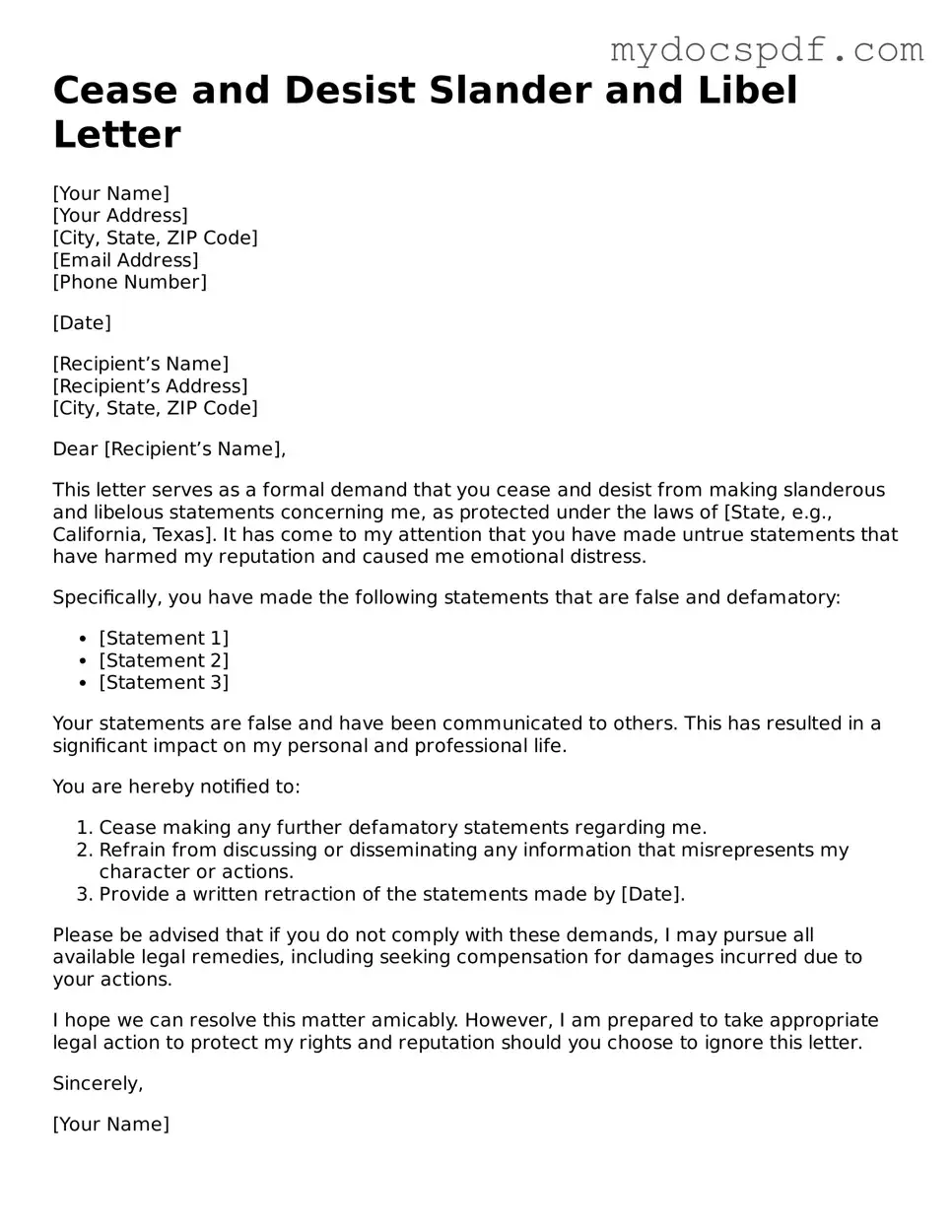Cease and Desist Slander and Libel Letter
[Your Name]
[Your Address]
[City, State, ZIP Code]
[Email Address]
[Phone Number]
[Date]
[Recipient’s Name]
[Recipient’s Address]
[City, State, ZIP Code]
Dear [Recipient’s Name],
This letter serves as a formal demand that you cease and desist from making slanderous and libelous statements concerning me, as protected under the laws of [State, e.g., California, Texas]. It has come to my attention that you have made untrue statements that have harmed my reputation and caused me emotional distress.
Specifically, you have made the following statements that are false and defamatory:
- [Statement 1]
- [Statement 2]
- [Statement 3]
Your statements are false and have been communicated to others. This has resulted in a significant impact on my personal and professional life.
You are hereby notified to:
- Cease making any further defamatory statements regarding me.
- Refrain from discussing or disseminating any information that misrepresents my character or actions.
- Provide a written retraction of the statements made by [Date].
Please be advised that if you do not comply with these demands, I may pursue all available legal remedies, including seeking compensation for damages incurred due to your actions.
I hope we can resolve this matter amicably. However, I am prepared to take appropriate legal action to protect my rights and reputation should you choose to ignore this letter.
Sincerely,
[Your Name]
